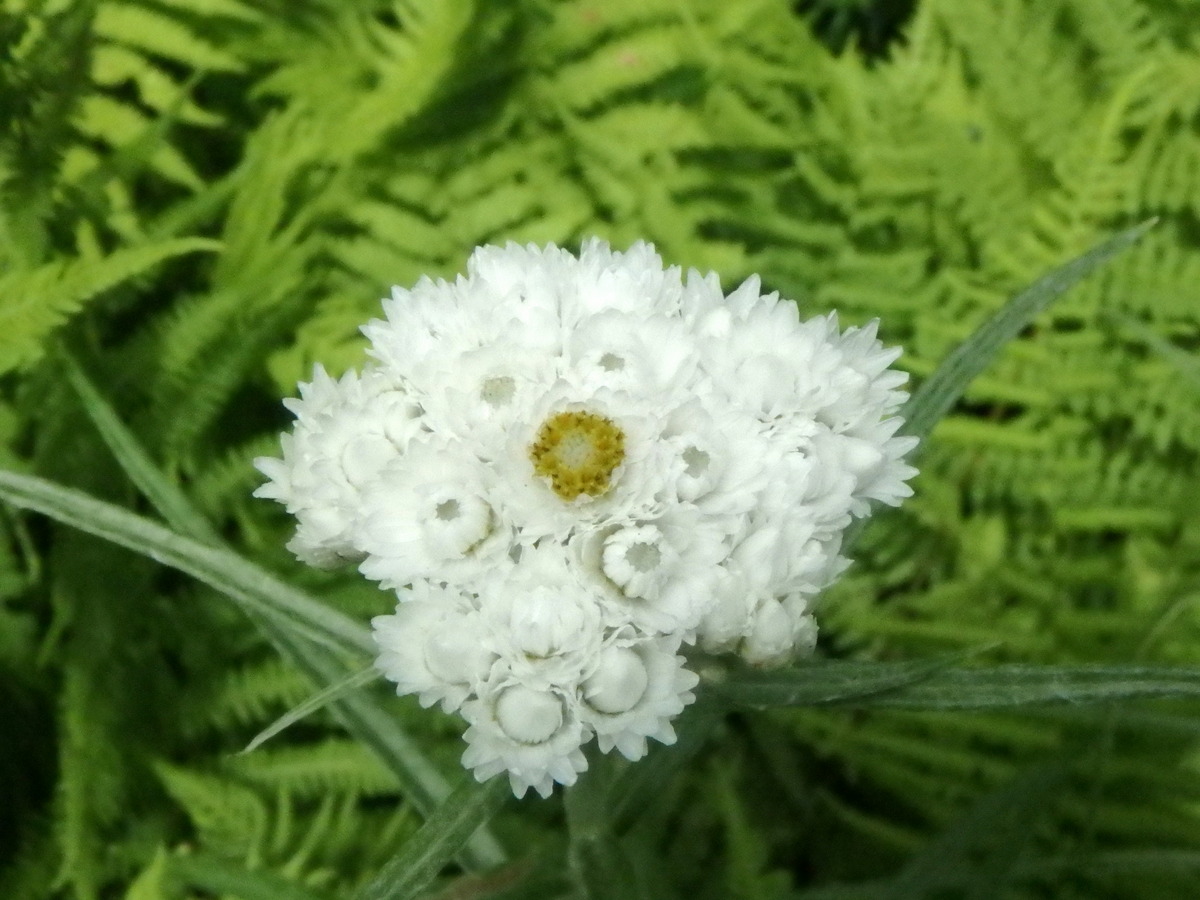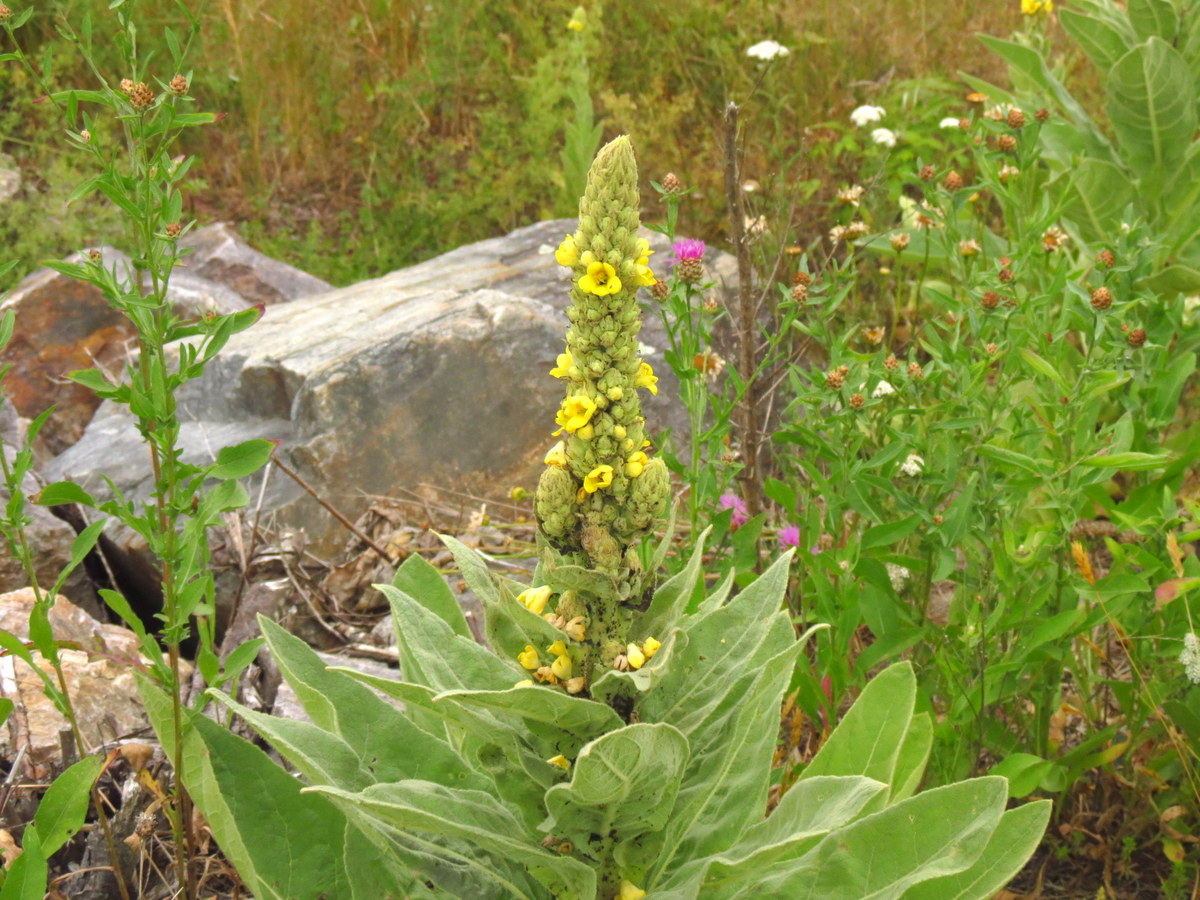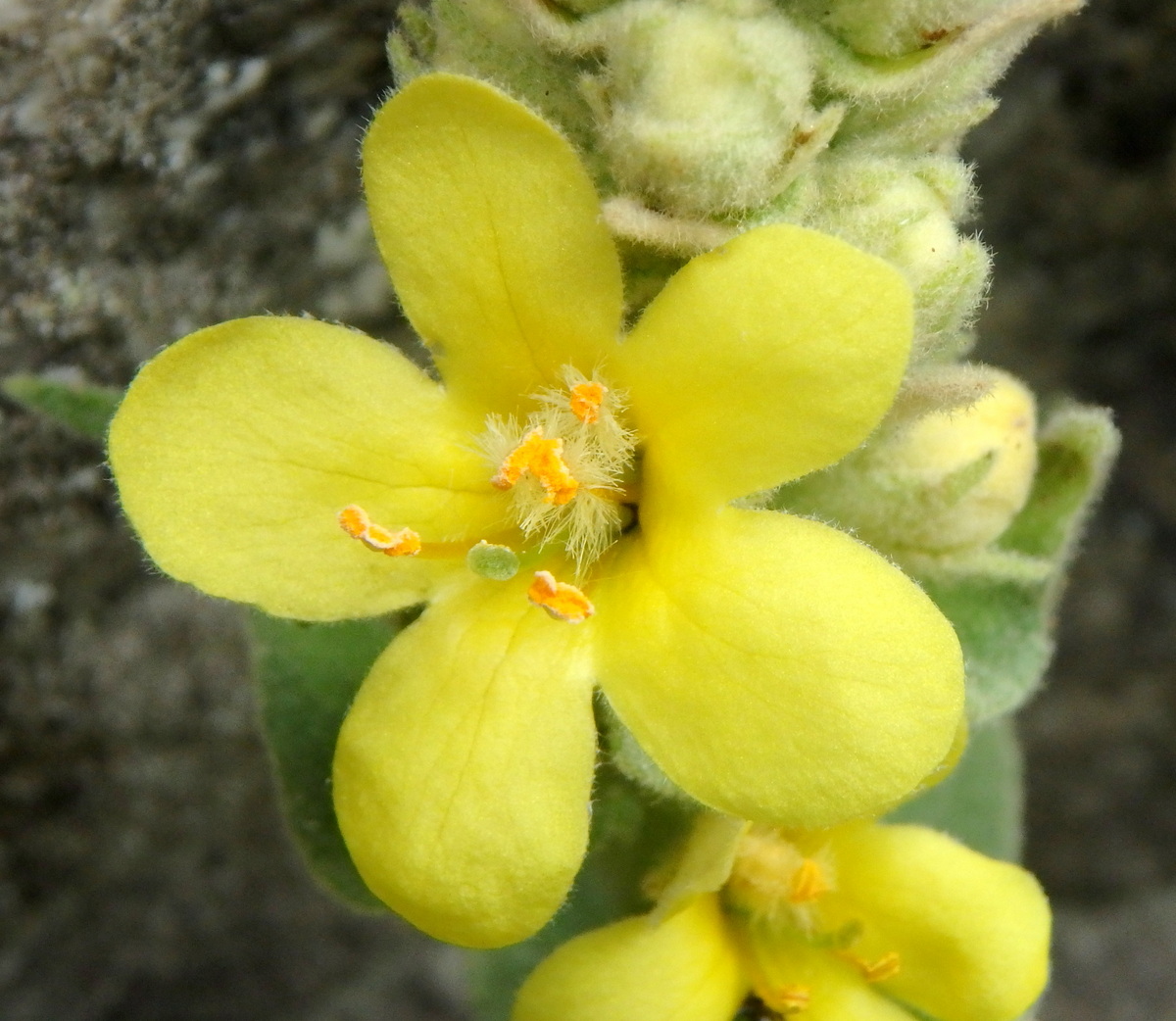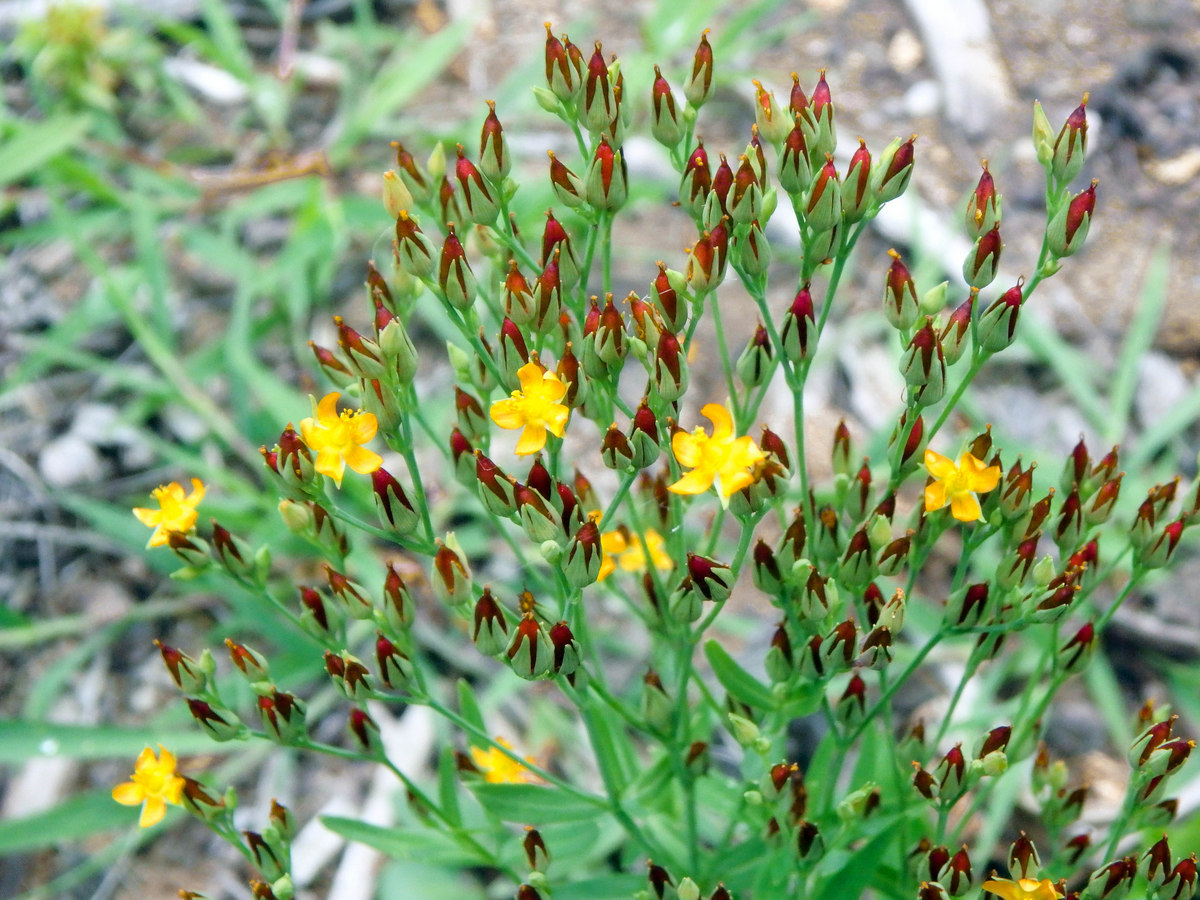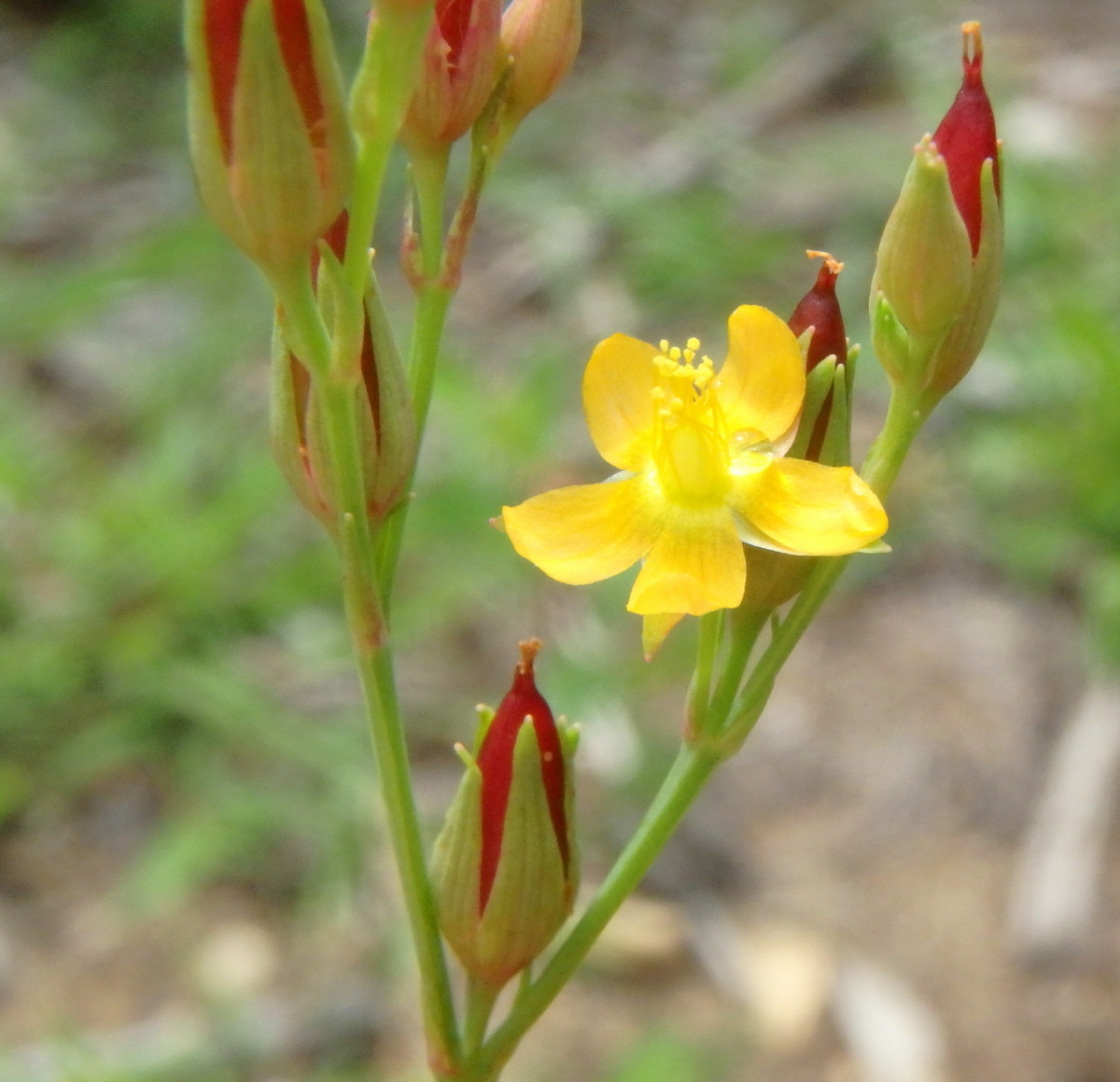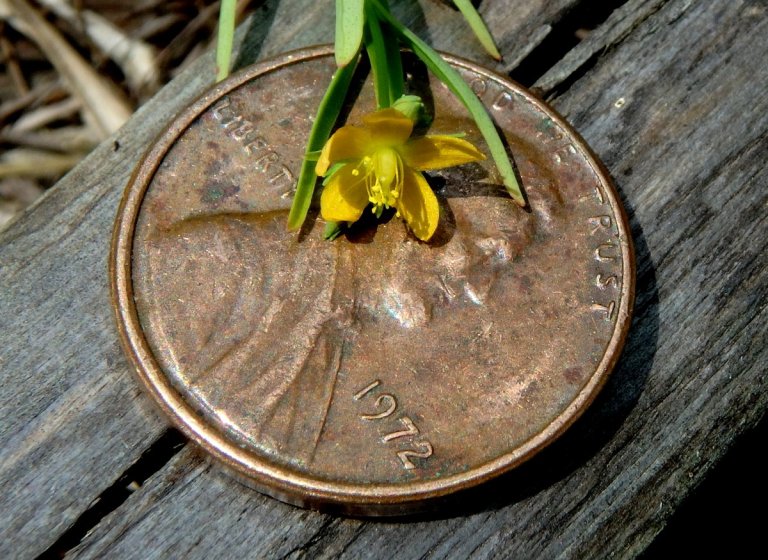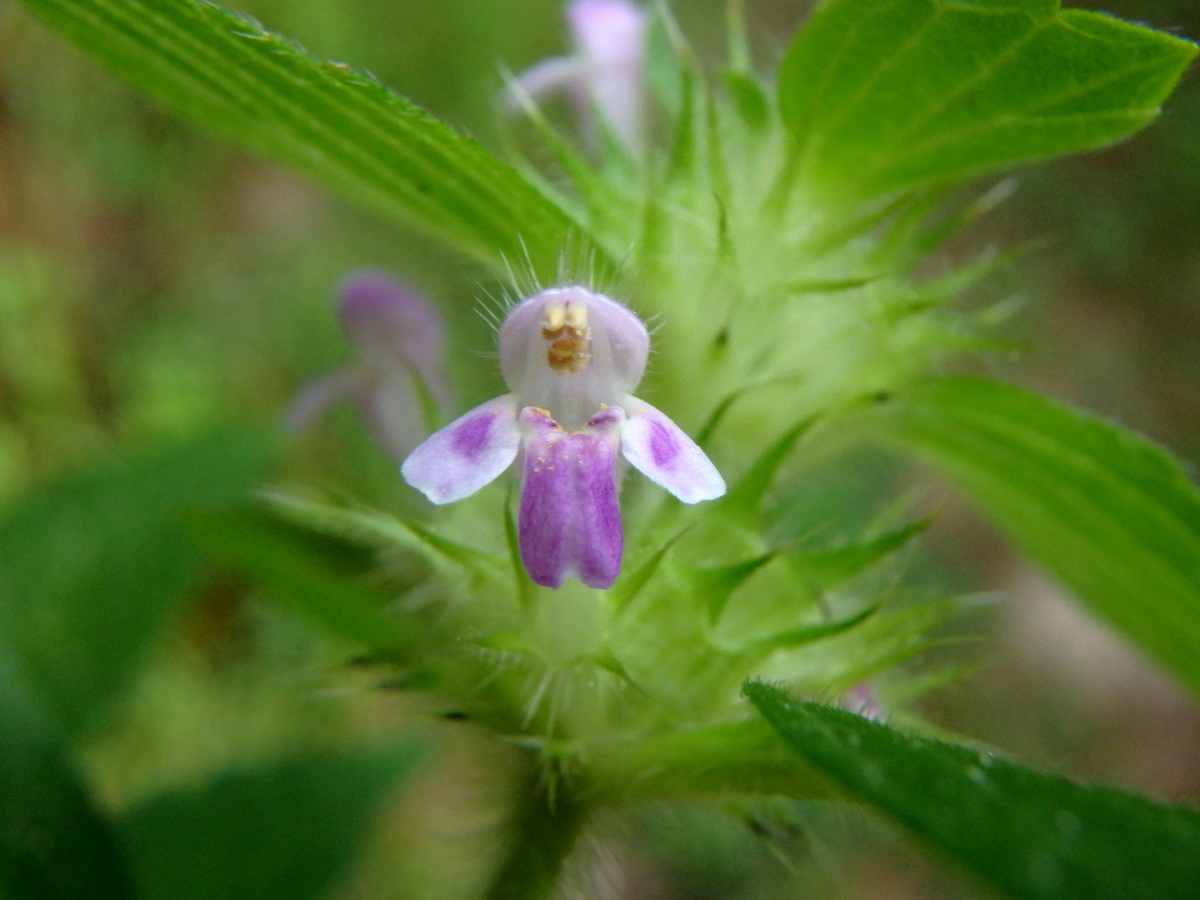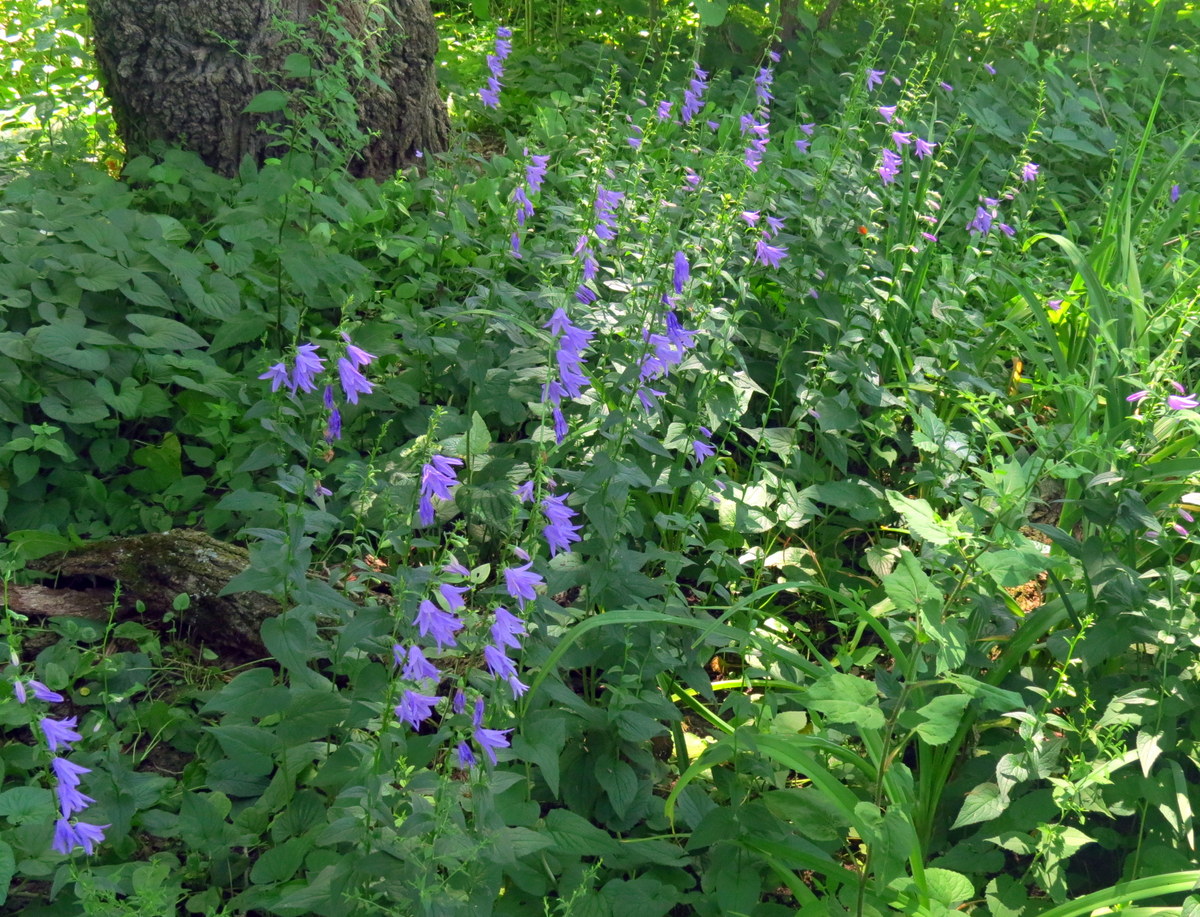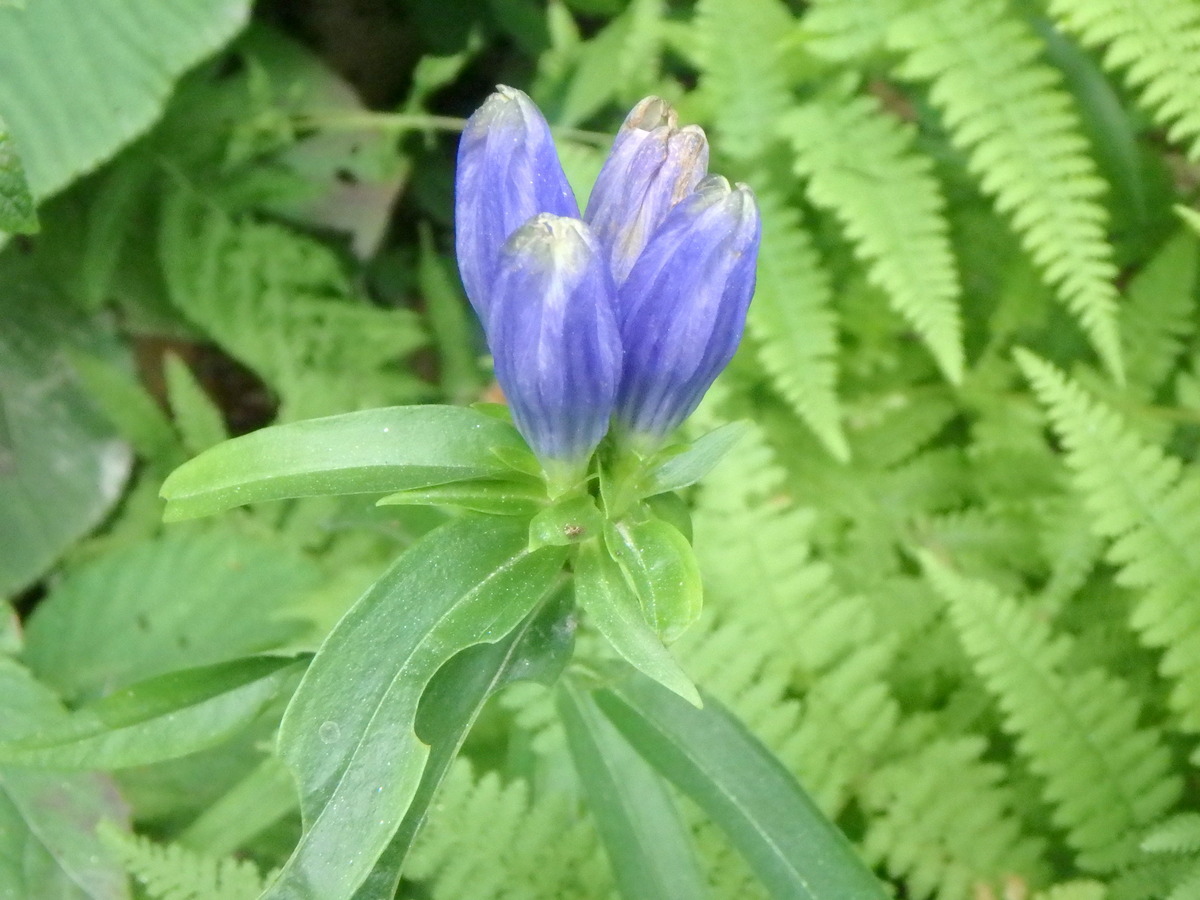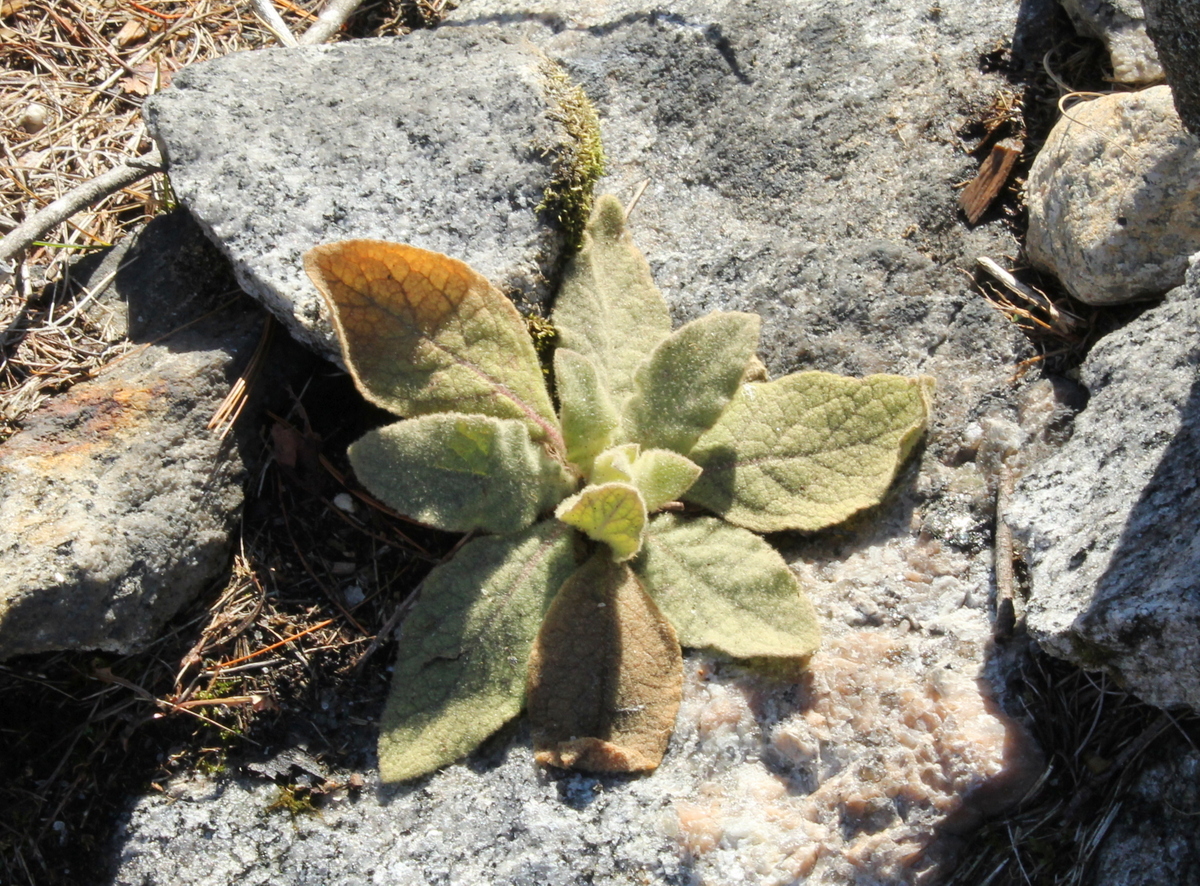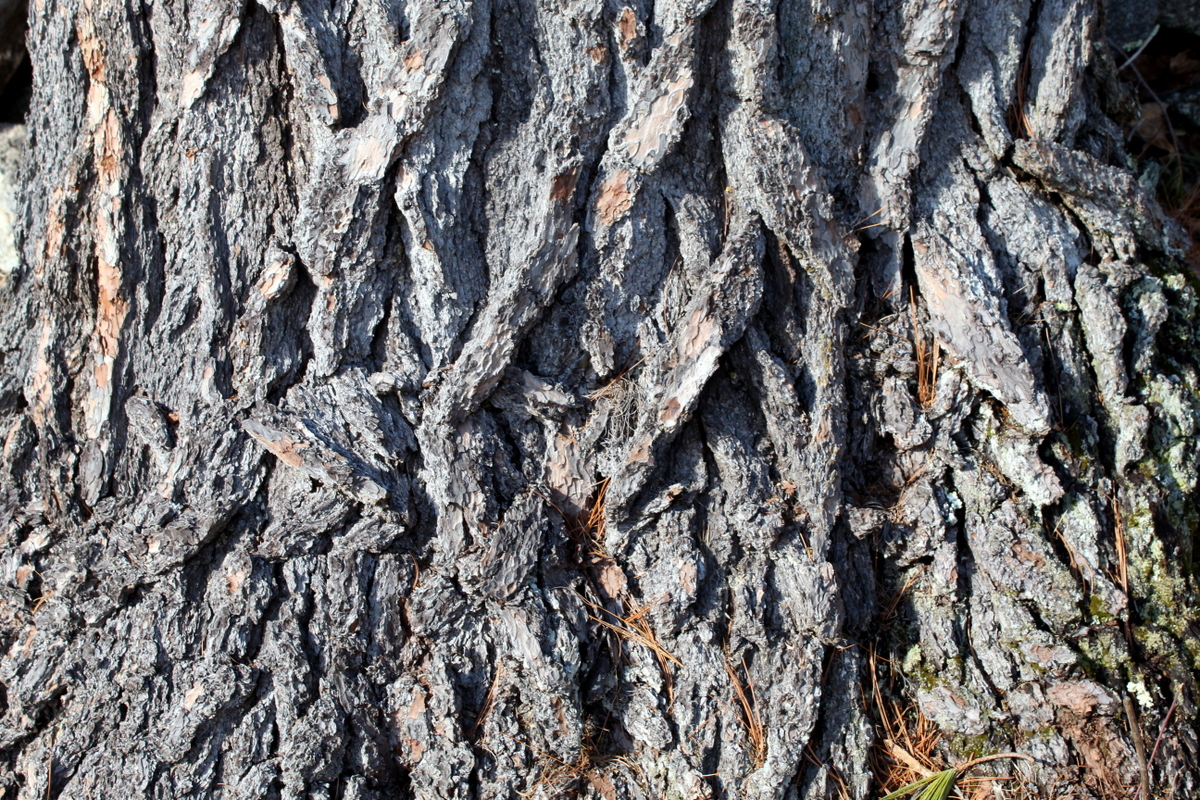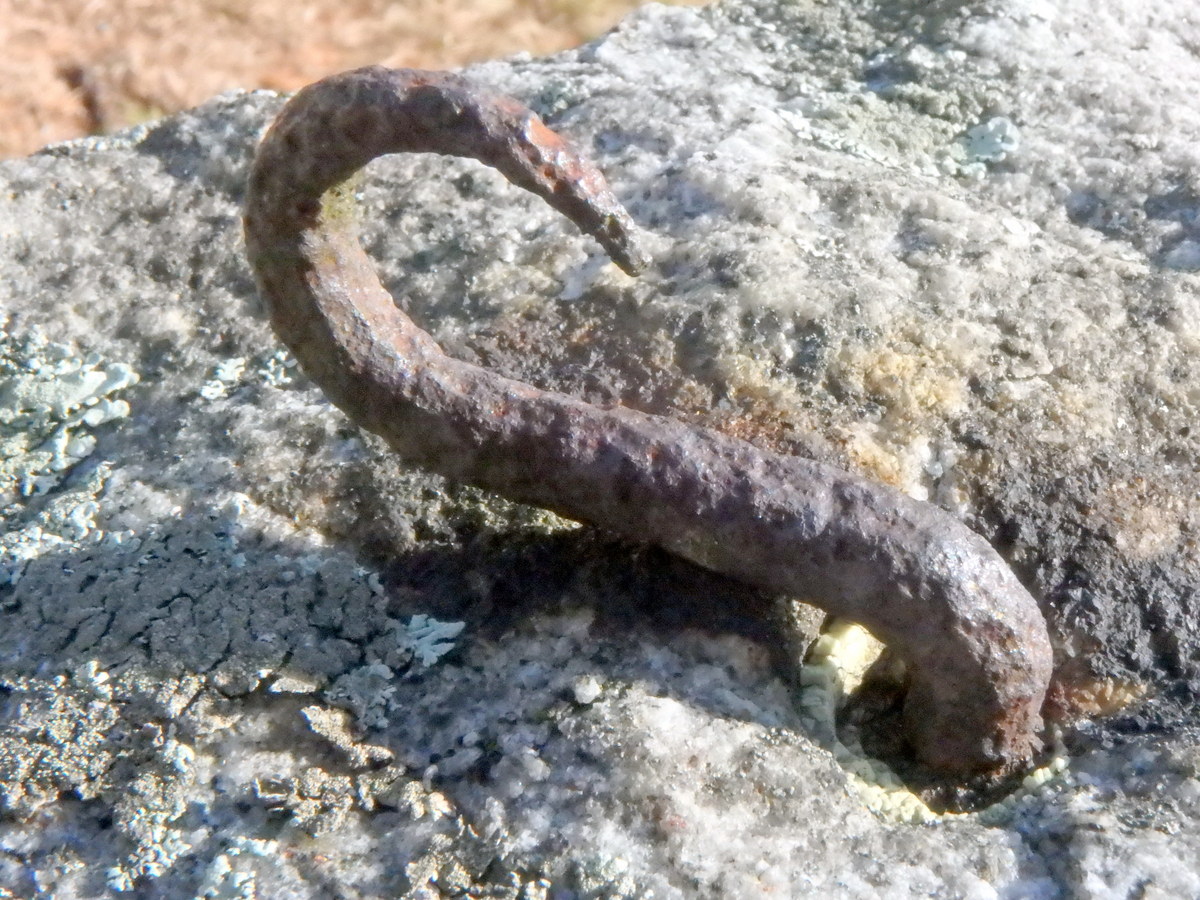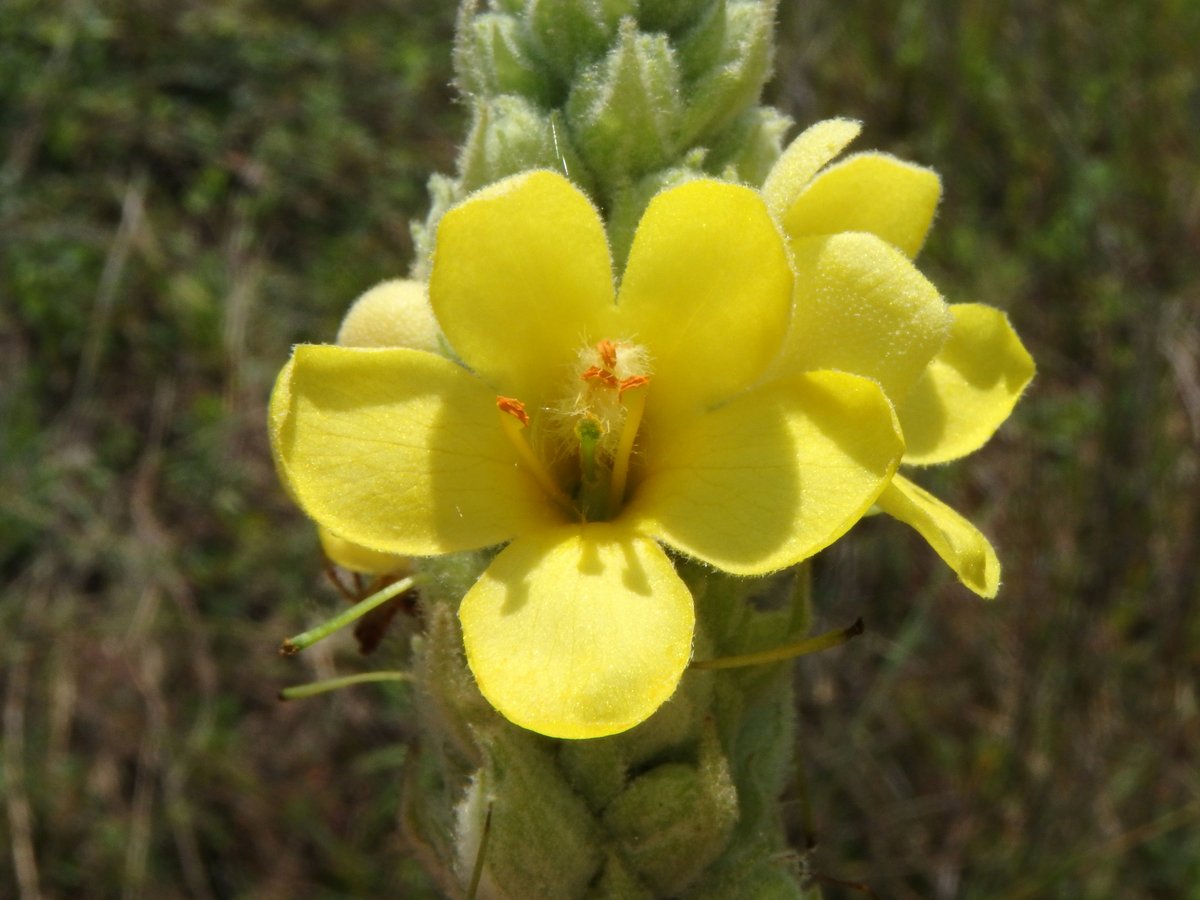
On Friday, April 16th nature decided to surprise us. This photo shows what I saw on my way to work that day. Parts of the state ended up with a foot of heavy wet snow but it was too warm for it to last..

…and in a day or two it was all gone.

It did get cold for a while but that didn’t slow things down for too long. Ferns like this lady fern (Athyrium filix-femina) still showed off their stamina with their naked spring fiddleheads. Lady fern is the only fern I know of with brown / black scales on its stalk in the fiddlehead stage. This fern likes to grow in moist, loamy areas along streams and rivers. They don’t like windy places, so if you find a shaded dell where a grove of lady fern grows it’s safe to assume that it doesn’t ever get very windy there.

Interrupted fern (Osmundastrum claytoniana) fiddleheads wore fur and huddled together to keep warm.

Red maple (Acer rubrum) seeds (samaras) are growing by the many millions. These are one of the smallest seeds in the maple family. It is estimated that a single tree 12 inches in diameter can produce nearly a million seeds, and if the tree is fertilized for 2 years seed production can increase by 10 times. It’s no wonder that red maple is getting a reputation for being a weed tree.

For a short time between when they appear and when they ripen and fall American elm (Ulmus americana) seeds have a white fringe. When they ripen they’ll become dry and papery and finally fall to the wind. I grew up on a street that had huge 200 year old elms on it and those trees put out seeds in the many millions. Elm seeds contain 45% protein and 7% fiber and in the great famine of 1812 they were used as food in Norway.

As I write this the large, infertile white blossoms of hobblebush (Viburnum lantanoides) have most likely fully formed, but when I last went to see them this is what they looked like; almost there. Hobblebush flower heads are made up of small fertile flowers in the center and large infertile flowers around the perimeter. The infertile flowers are there to attract insects to the much less showy fertile ones and it’s a strategy that must work well because I see plenty of berries in the fall. They start out green and go to a beautiful bright red before ripening to a deep purple color.

Japanese knotweed (Fallopia japonica) can be quite beautiful when it starts to unfurl its leaves in spring but Americans have no love affair with it because it is an invasive weed that is nearly impossible to eradicate once it becomes established. I’ve seen it killed back to the ground by frost and in less than 3 weeks it had grown right back. I’ve heard that the new spring shoots taste much like rhubarb. If we ate them maybe they wouldn’t be such a bother. Maybe in pies?

This mullein plant was one of the biggest I’ve seen; as big as a car tire. I loved the pattern the leaves made. Native Americans used tea made from its large, gray green furry leaves to treat asthma and other respiratory ailments. They also used the roots to treat coughs, and it is also said to be useful as a relaxant and sleep aid. The Cherokee tribe are said to have rubbed mullein leaves in their armpits to treat prickly rash and the Navaho tribe made an infusion of the leaves and rubbed it on the bodies of their hunters to give them strength. Clearly this plant has been used for many thousands of years. It is considered one of the “oldest herbs’ and recent research has shown that mullein does indeed have strong anti-inflammatory properties.

Wild Leeks (Allium tricoccum), also called ramps, are up. They look like scallions and taste somewhere between onions and garlic. They are considered a great delicacy and are a favorite spring vegetable in many parts of the world, but they’ve been over collected so harvesting has been banned in many parts of the U.S. and Canada. They’re slow growers from seed and a 10 percent harvest of a colony can take 10 years to grow back. They take 18 months to germinate from seed and 5 to 7 years to become mature enough to harvest. That’s why, when people write in and ask me where to find them, I can’t tell them. The two small colonies I’ve found have less than 300 plants combined.

This photo is from a few years ago when I foolishly pulled up a couple of ramps, not knowing how rare they were. It shows their resemblance to scallions though, and that’s what I wanted you to see. They are said to be strongly flavored with a pungent odor, but they’ve been prized by mankind since the ancient Egyptians ate them. Each spring there are ramp festivals all over the world and in some places they’re called the “King of stink.” The name ramp comes from the English word ramson, which is a common name of the European bear leek (Allium ursinum,) which is a cousin of the North American wild leek.

In one of the spots I go to find ramps I find false hellebore (Veratrum viride) growing right beside them. There is a lesson in that, and it is know your plants well if you’re going to eat them. Ramps are one of the most delicious wild plants and false hellebore one of the deadliest. As you can see from the photos they look nothing alike but people do still confuse them. As recently as 2019 a physics professor and his wife wanted some spring greens for breakfast at their cabin in Vermont. The greens they chose, instead of the ramps they thought they were picking, were actually false hellebore. They spent 2 weeks in the hospital and almost died. From 2014 to 2019 in Vermont 18 people were poisoned by false hellebore so again; know your plants. In this case it is simple: ramps smell like onions and false hellebore does not.

And then there is skunk cabbage (Symplocarpus foetidus,) which is also up at the same time as ramps and false hellebore. Though I haven’t heard of anyone mistaking skunk cabbage for ramps,. when the leaves of skunk cabbage just come up and start to unfurl I could imagine some thinking they were ramps. In any event skunk cabbage won’t kill a person but after smelling it I can picture it giving a person a good tummy ache.

There are is magic in the woods; beautiful things that many never see, and the glowing spring buds of the striped maples are one of them. Velvety soft and colored in pink and orange, they are one of the things I most look forward to seeing in spring.

But you have to be quick and pay close attention if you’re going to watch spring buds unfold, because it can happen quickly. This striped maple bud was all ready to break.

I saw a porcupine in a tree where I work. This porcupine, if it is the same one, had a baby with her last year. This year she doesn’t look well but since you could fit what I know about porcupines in a thimble and have room to spare, I can’t be sure. I do know that three or four of us thought she looked as if something was wrong.

I felt as if I was being watched one day when I was taking photos of violets and turned to find a very suspicious robin wondering just what it was I was up to. I said hello and it hopped even closer. It looked very well fed and I wondered if it was hopping in the grass because it was too heavy to get off the ground. Of course I didn’t ask. Instead I stood and walked across the lawn and when I turned to look again I saw that it was still watching me. Probably making sure I wasn’t making off with any of its worms.

I don’t see many wooly bear caterpillars in spring but here it was. Folklore says that the wider the orangey brown band on a wooly bear caterpillar is, the milder the winter will be. We did indeed have a mild winter but I doubt the wooly bear cared either way because wooly bears produce their own antifreeze and can freeze solid. Once the temperature rises into the 40s F in spring they thaw out and begin feeding on dandelion and other early spring greens. Eventually they spin a cocoon and emerge as a beautiful tiger moth. From that point on it has only two weeks to live. Since this one was on a step I’m guessing that it was looking for a place to make a cocoon.

The new shoots of Solomon’s seal (Polygonatum biflorum) are up and leafing out. Usually even plants this small will have tiny flower buds on them but I didn’t see any on this one. Each year the above ground stem leaves a scar, or “seal” on the underground stem, which is called a rhizome. Counting these scars will reveal the age of the plant but of course you have to dig it up to do that and I never have.

I finally found the female flowers of sweet gale (Myrica gale.) They’re bushy little things that remind me of female alder catkins. Sweet gale is also called bog rosemary and likes to grow on the banks of acidic lakes, bogs and streams. Touching the foliage releases a sweet, pleasant scent from its resinous leaves which have been used for centuries as a natural insect repellent.

These are the male catkins of sweet gale. They’re much larger than the female catkins and much easier to spot.

If there is anything that holds more promise than new spring leaves I’ve never experienced it.

Bud break is defined as “when the green tip of a leaf can be seen emerging from the bud.” It’s happening right now to a lot of trees like this sugar maple. I love the veining on sugar maple leaves just before they unfurl.

I complained in an earlier post how, though maple leaves often come out of the bud colored red, all I was seeing this year were green. Of course as soon as I say something like that nature throws me a curve ball and on this day all I saw were young red leaves. Actually my color finding software calls them salmon pink and orange.

All of the snow in that first photo ended up like this; spring runoff. That means of course that I get to enjoy the moisture in its two forms; first when it clothes every branch and twig and second when it becomes a beautiful waterfall. This is one of my favorite spring scenes. I call this the “disappearing waterfall” because it comes and goes depending on the weather. It was in fine form on this day but it could be gone completely the next time I go to see it.
I meant to do my work today, but a brown bird sang in the apple tree, and a butterfly flitted across the field, and all the leaves were calling. ~Richard le Gallienn
Thanks for stopping in.




















